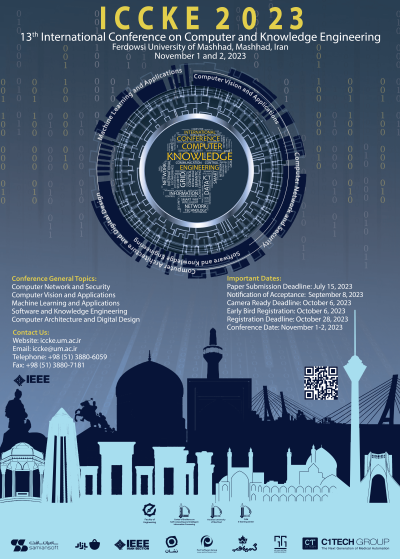0% Complete

Authors :
Keywords :
Abstract :
List of archived papers
Omid Tasbaz - Vahideh Moghtadaiee - Bahar Farahani
Amirhossein Ghaemi - Seyyed Amir Mousavi mobarakeh - Habibollah Danyali - Kamran Kazemi
Samin Zare - Mehran Yazdi
Sajjad Rezaei - Mohsen Kahani - Behshid Behkamal
Omid Nejati manzari - Amin Boudesh - Shahriar B. Shokouhi
Mohammad Ali Zarif - Javad Hamidzadeh
Rahman Mohammadi - Seyed Reza Razavi Pour
Elaheh Norouzi Ghehi - Ali Fallah - Saeid Rashidi - Maryam Mehdizadeh Dastjerdi
Parisa Fard Moshiri - Mohammad Nabati - Reza Shahbazian - Seyed Ali Ghorashi
Benyamin Mirab Golkhatmi - Mohammad Hossein Moattar




